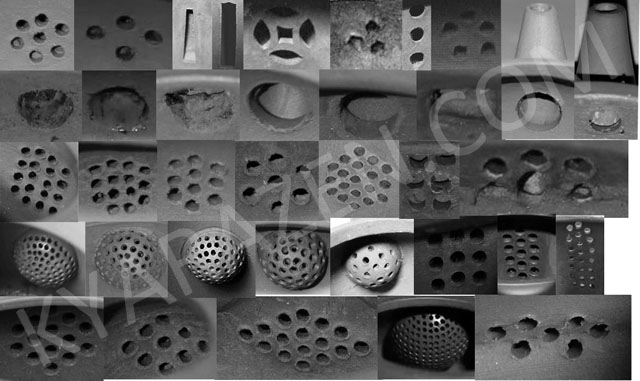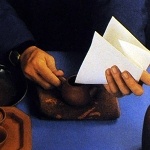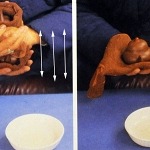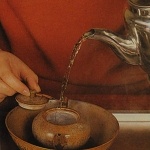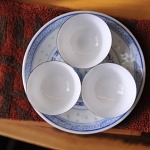Oops, another hiatus in writing. Had been caught up in much work and was also away on a trip to Taiwan. As I should be re-starting to warm myself up by writing more posts.. I thought I would start with a simple, but important subject, installing filters in tea pots.
To proper tea drinkers, and people whom enjoy the aesthetic of tea pots and the processes involved with brewing, the pour of a pot, on how it dispenses tea is extremely important. A nice beautiful stream allows accurate and decisive dispensing, a good pour rate without the spout clogging prevents over-steeping of teas and the frustrations from always having to stick an unclogging tool down the spout.
This is the pour stream of a 1930s-40s handmade shuiping pot, a smooth, decisive pour with water.
With water only, it is simple, but when there are tea leaves present, loose leaves have a good propensity of going into the spout, partially occluding it, leading to dribbly pours and a slow rate of dispensing.
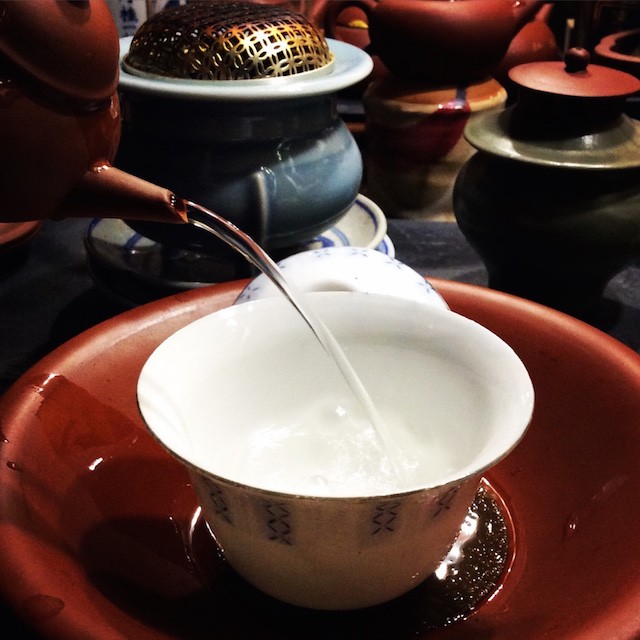
Since most of the lovely shuiping pots from late Qing to the 1970s have single hole filters, you may have a rare pot that cost thousands of dollars but running into the risks of not pouring well. Some might say that you can set up a “chaozhou style tea gall” in the pot and that would naturally minimize spout clogging, but you cannot do that with many other teas, such as rolled oolongs, or black/red teas with lots of tender tiny buds.
The solution to this, is to install a stainless steel mesh filter. On first encounter, it may seem to be a rare and hard to find item, but in actual fact it is extremely common… you can find it in tea strainers, spaghetti strainers, flour sieves etc. Using the mesh of these kitchen tools is safe as many are made of high quality food-safe steels. Do not use cheap mesh, or those that you can find in hardware stores to keep bugs out etc!!!
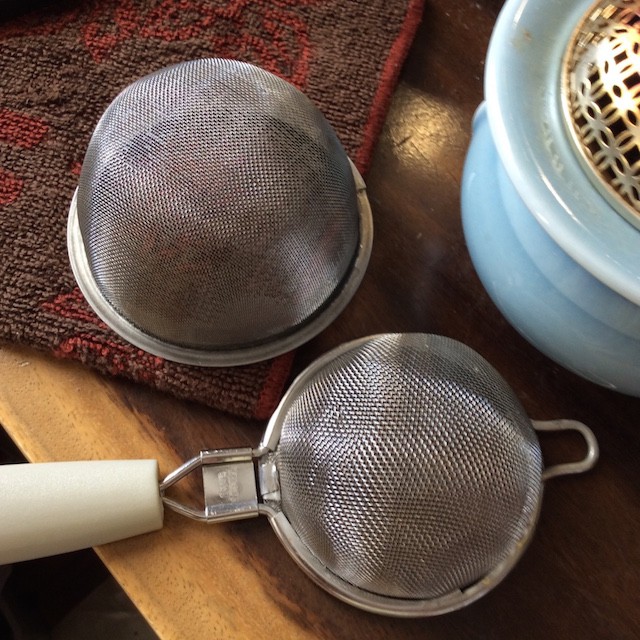
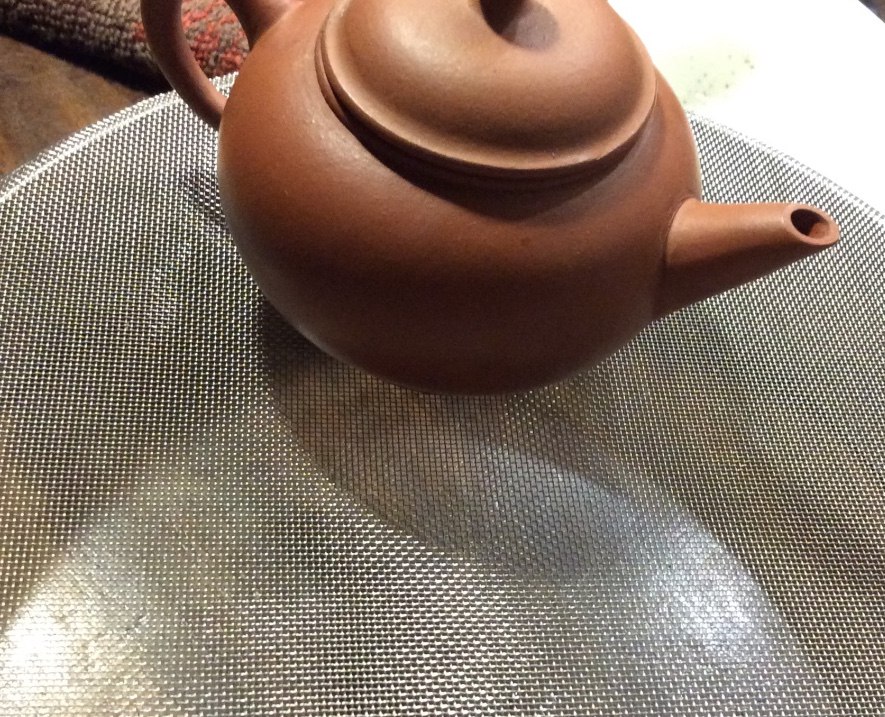
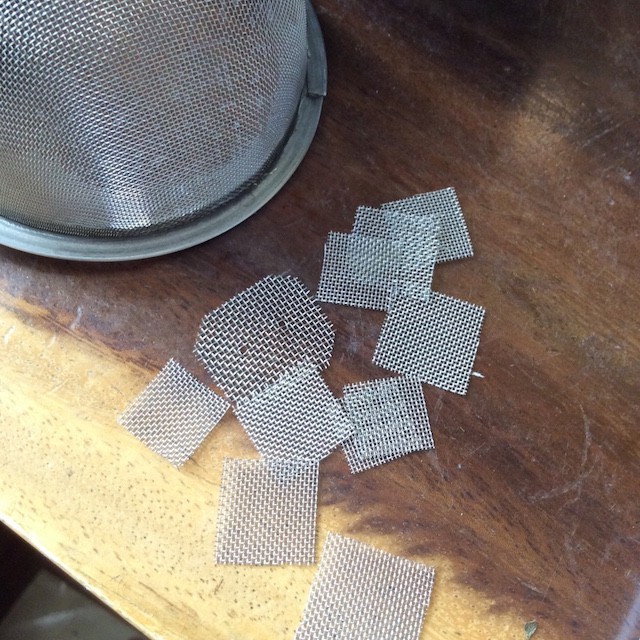
In tool shops or hardware stores you will be able to find little cutting tools that can easily cut these meshes into small squares.
You may also need to buy stainless steel wire of approximately 16 to 20 gauge which you can make into retaining clips with a pair of pliers.
if you do not wish to use a retaining clip, you can consider making a ball shaped mesh filter as described further below, but lets look at the retaining clip method first.
The Retaining Clip Method
Select one of your favourite pots that has a single hole filter. Use this method only if your spout is straight, or there is ample space. If your spout has a couple of bends to it, i.e. very curvacious, it could be better to use the ball filter method, so that the retaining clip will not risk damaging the pot when you press too hard.
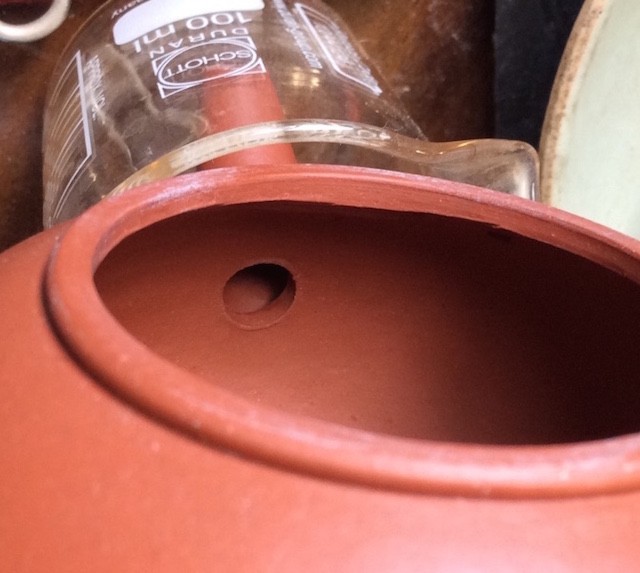
Bend a stainless steel write into a U shape retaining clip, with the flat end approximately the width of the filter hole (has to be smaller by 1-2mm)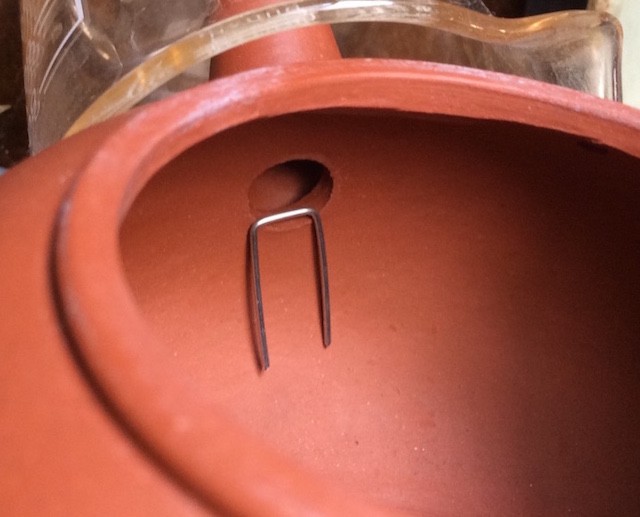
Once done, you can use a sharp tool or a thumb tack to enlarge 2 holes on the mesh, to the exact width of the flat side of the retaining clip.
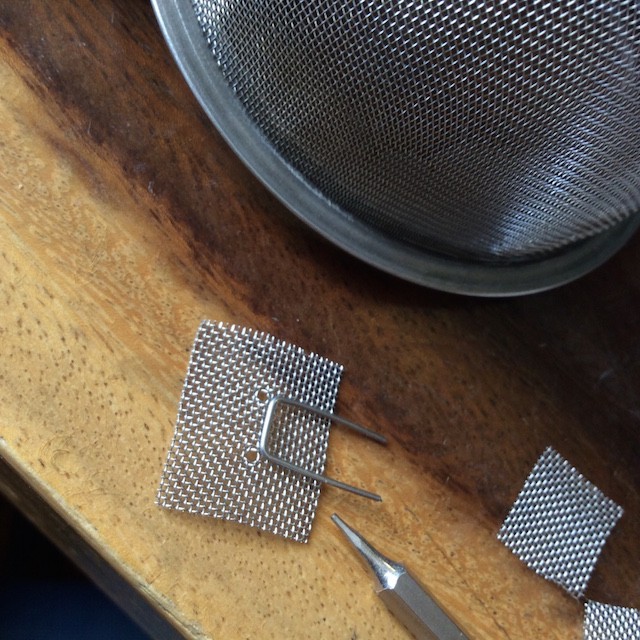
Insert the retaining clip
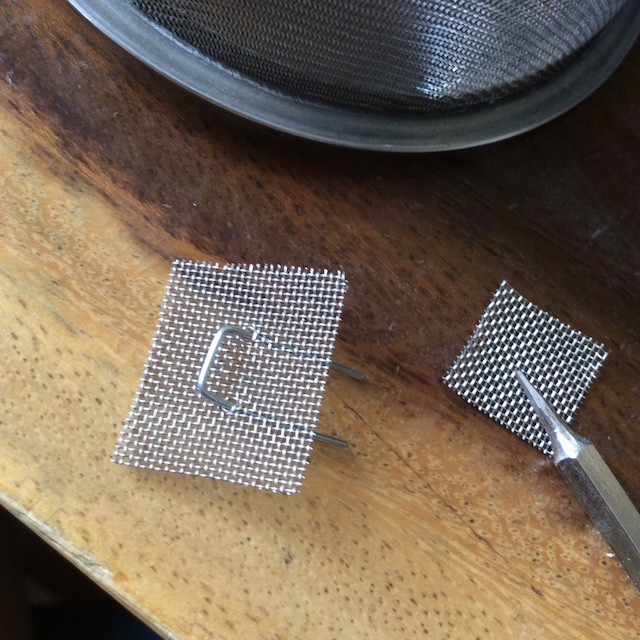
Install by pushing the 2 sharp ends of the retaining clip into the hole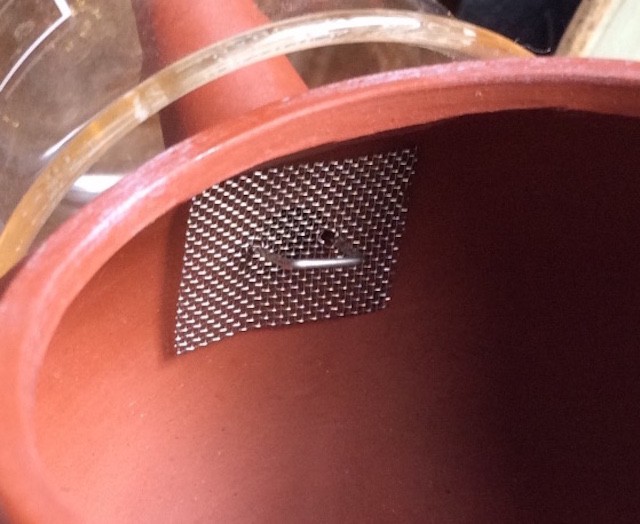
You will meet some resistance, but you can wiggle it lightly with a finger and push the clip in all the way until it feels snug and “flushed” with the pot walls.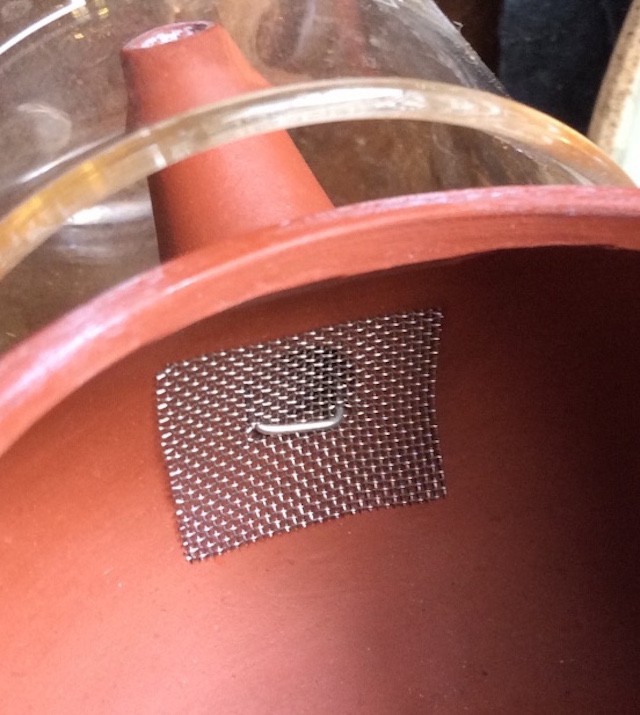
Voila! done!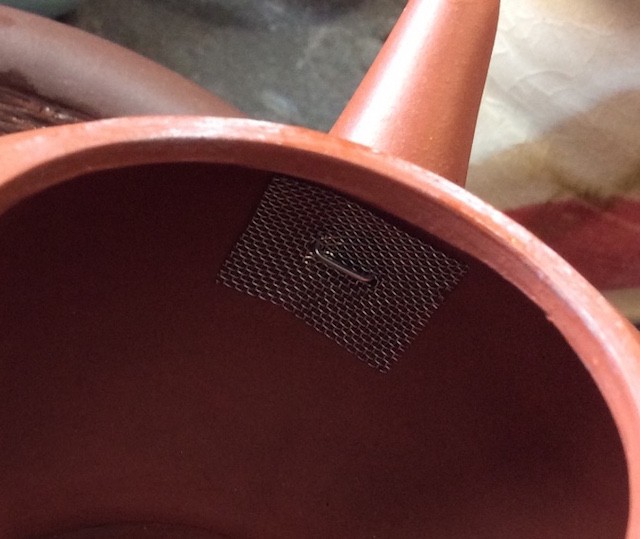
But if the clip feels loose and the mesh filter drops out easily, you can widen the 2 legs of the retaining clip further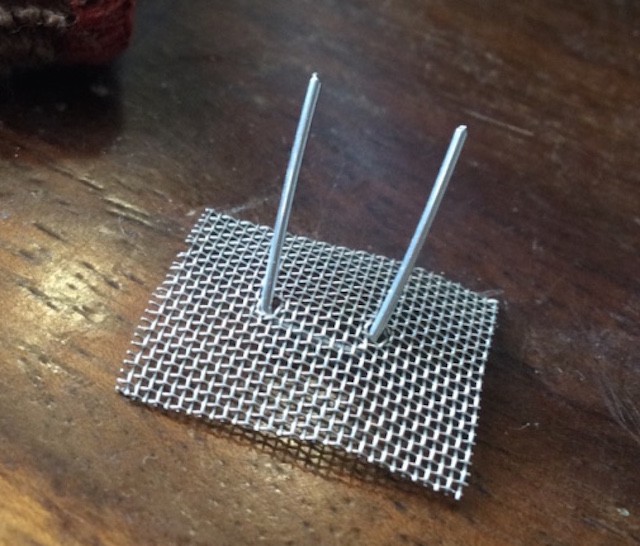
And using a pair of long nose pliers to temporarily hold them closer together for installation. 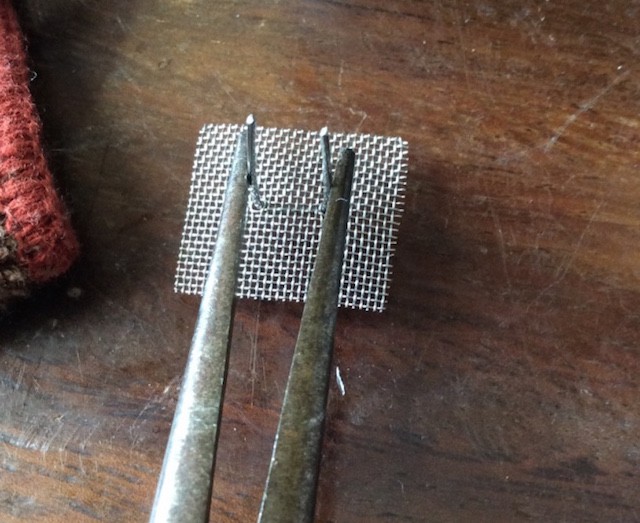
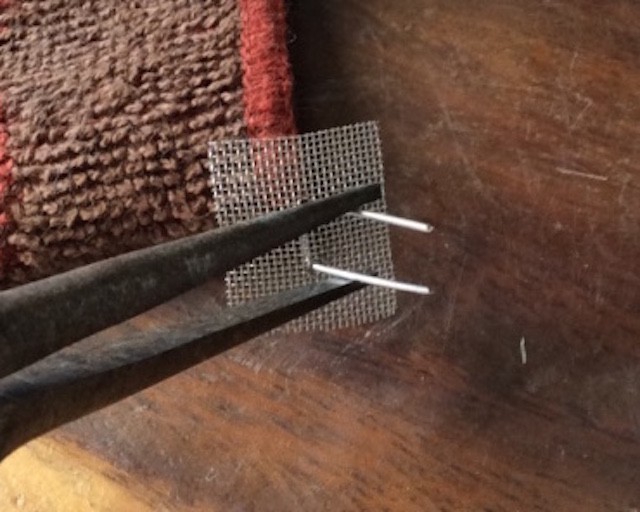
You can also buy a bent nose plier with some teeth that provides a very secure grip on the clip, allowing you to bend the clip easily just by pressing on the region near the flat end of the clip. If the stainless steel wire is good quality, it is very springy and resilient, pressing it this way does not cause it to go out of shape. 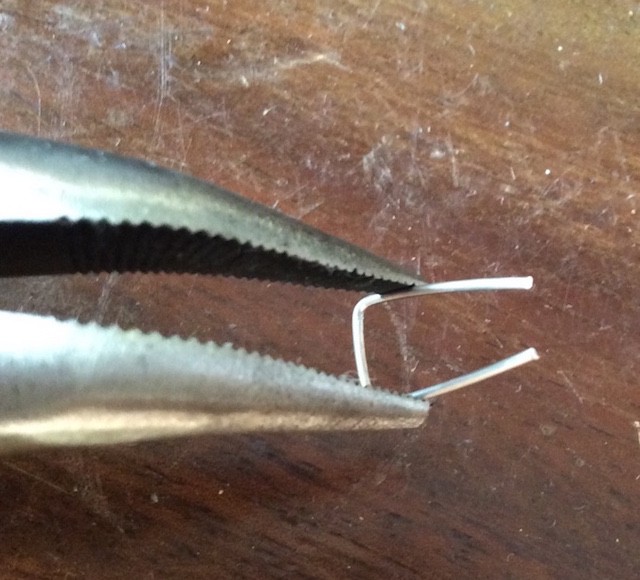
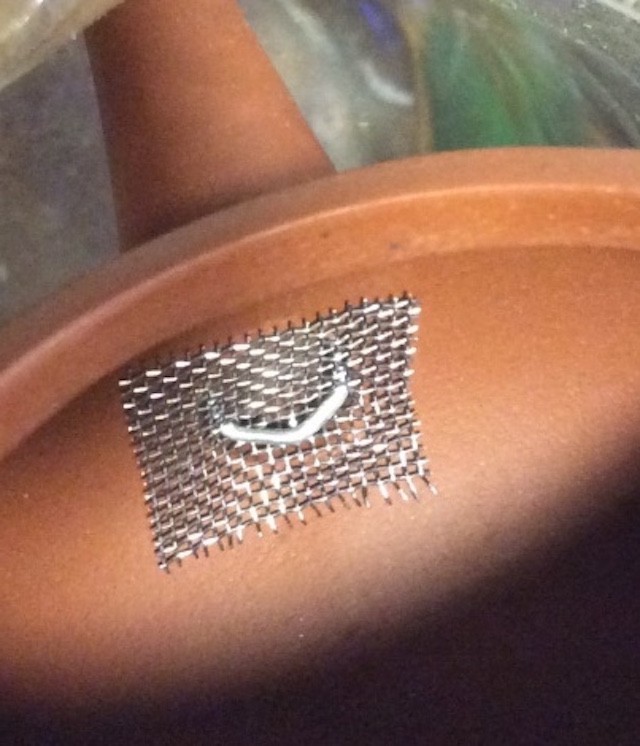
Easy peasy! and no more clogging!
The Ball filter method
The Ball filter method is for people whom do not want to use a retaining clip (which does occlude the spout inner diameter by 10 to 20% depending on wire thickness and spout size)
You start with the same mesh square, but press it against the end of a round stick until you get a elongated structure that can stand on its own.
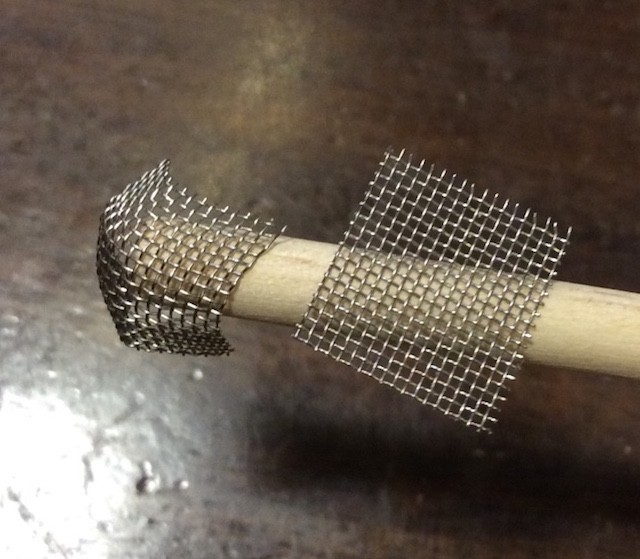
Do take note of stray wires and remove them, you can see a stray wire in the structure on the left.
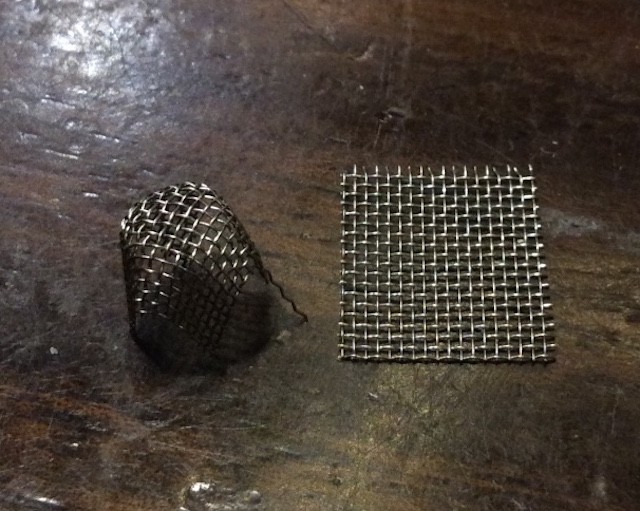
Once it is of approximately the right size, fit it onto the single hole in the pot. As you can see, it does not fit well and does look like it can drop out any time.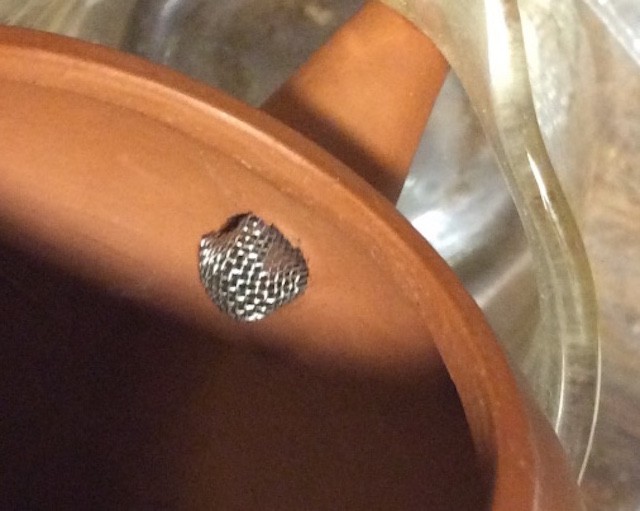
Using a bamboo or wooden tool with a flat end, gently nudge and push around the filter, bending the mesh gently and allowing it to slip into the hole. 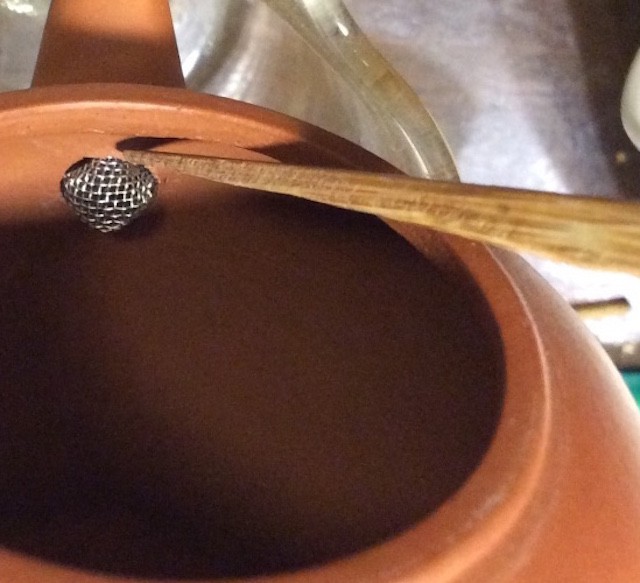
Repeat! pushing all the possible regions and edges. As the “ball” filter is larger than the spout hole, if you do this step carefully the filter will fit extremely snugly. 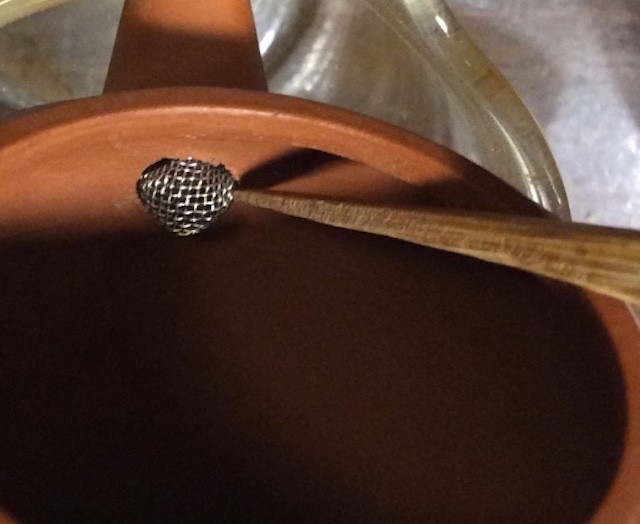
Somewhat done! And if you dont like it, you can just stick a toothpick down the spout and push this out, into the pot, or you can pick it out with a pair of sharp forceps. 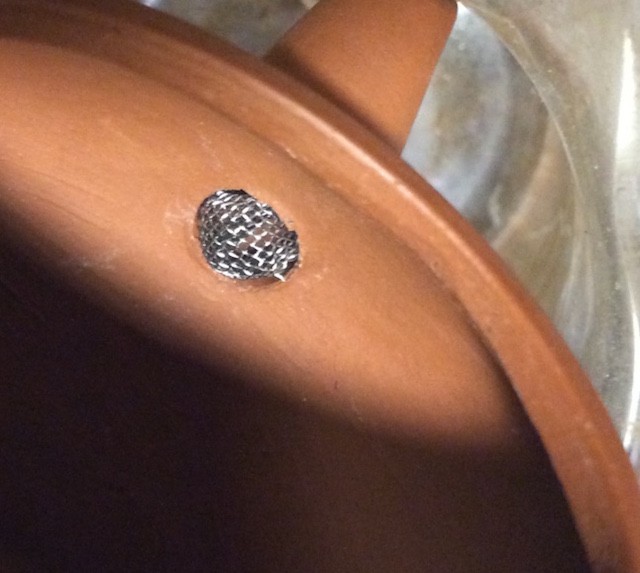
Sometimes you may realize that the ball is not well fitted or there is a gap between the filter and wall. If it happens, you should check if the filter is snug. If it is, it should be fine, if not, take it out and re-work on it.
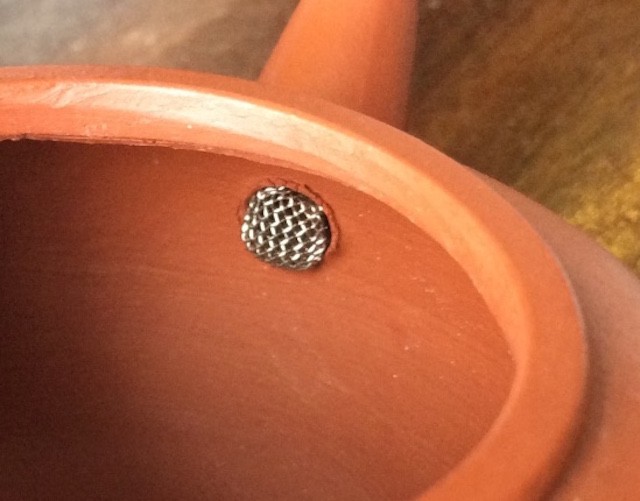
And with the ball filter in place, tada!!! Beautiful pour stream, even with fine Lapsang leaves!!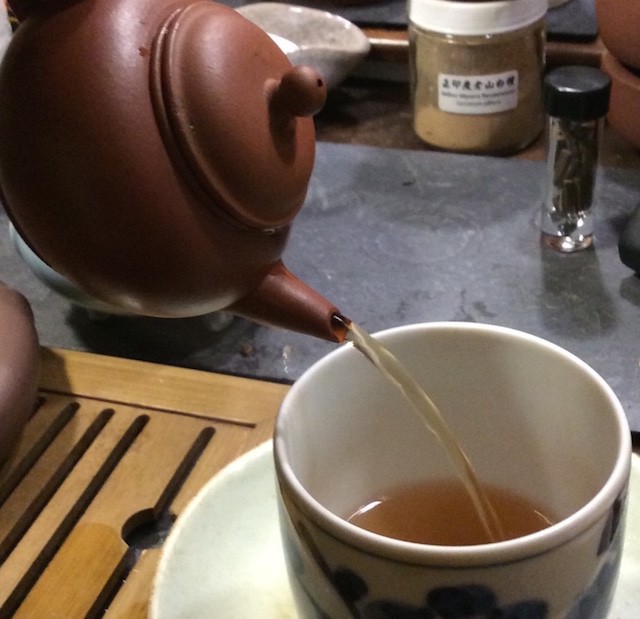
In the history of Yixing wares, there are indeed many filter hole variations. In due time I’ll describe them! stay tuned.
